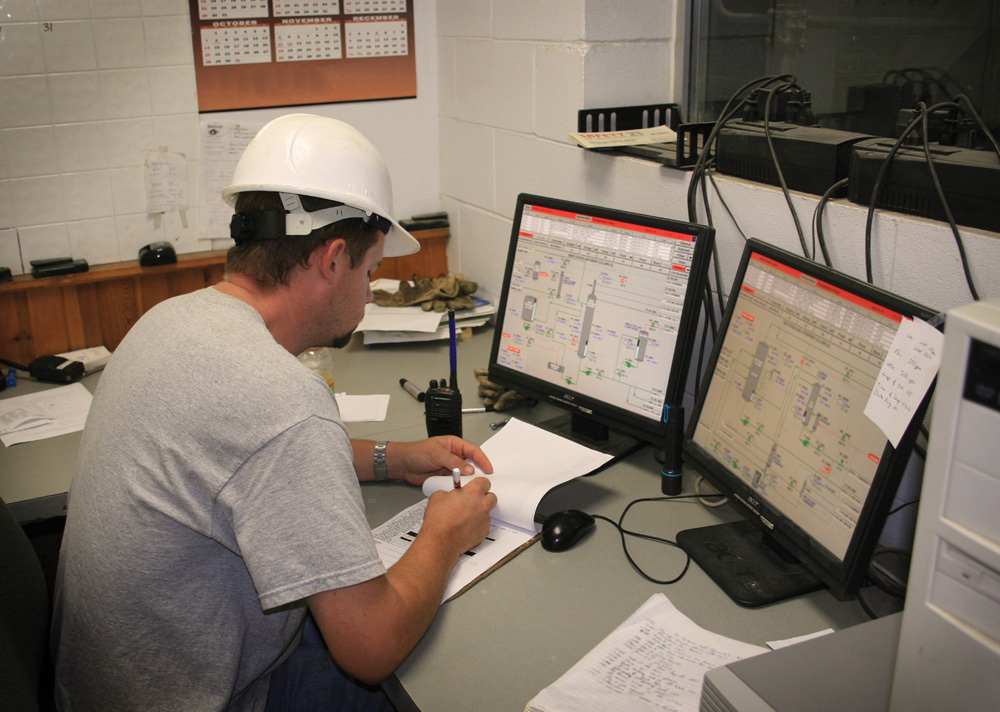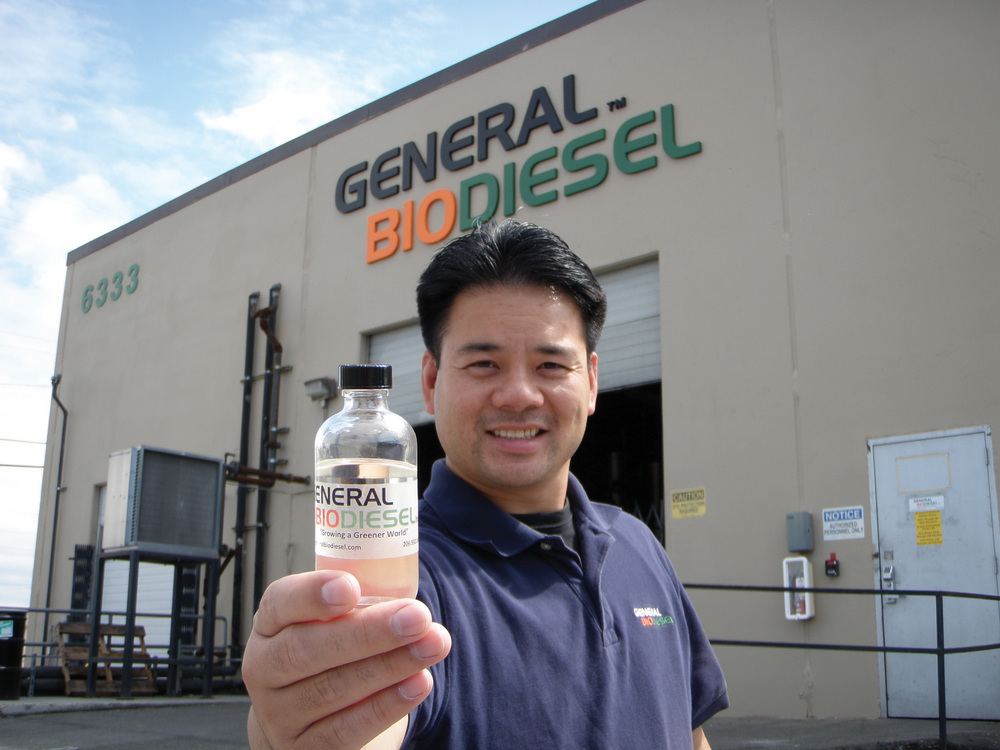A Safe Trajectory



November 22, 2011
BY Luke Geiver
The combination of the blenders tax credit, high RIN prices and an operating RFS2 has made 2011 an unprecedented year in the biodiesel industry. But although the wide margins seem great, situations do arise as producers try to restart, ramp-up or maximize their production efforts.
Those issues, when ignored, can bring down even the most efficient biodiesel production process. This month Biodiesel Magazine speaks with biodiesel producers and service providers to remind everyone involved in this record year that, as production increases or even levels off, safety remains king—it’s still “safety first.”
Yale Wong is the CEO of General Biodiesel, a 5 MMgy facility that processes yellow grease and waste vegetable oil into on-spec biodiesel. “Things are rocking man—they are really rocking,” Wong says of the current biodiesel industry. After raising enough capital, Wong and his team were able to perform needed efficiencies and upgrades at the plant over the past year that have helped his operation see a 23 percent increase in monthly production. “One of the biggest improvements is that we were able to start recovering more methanol,” he explains. “I think that is one of the keys out of the biodiesel process, finding ways to do the most recoveries out of the methanol process to give you back your biggest percentage gains.”
By implementing a methanol distillation process, the team has been able to reduce costs by 30 to 50 cents per gallon. “Once you hit that threshold, you really hit that point where now you see the dollars rolling in—you are making money,” Wong says. But for small producers and startup biodiesel production firms looking to capitalize on the economic atmosphere of 2011 that do not have the money to buy a distillation process to recover methanol, Wong cautions cutting corners with safety measures pertaining to methanol recovery is not wise. Methanol is such a flammable liquid or gas, he reminds us, one you can’t even see. “We are finding out that we have to spend double the amount of money with methanol safety,” he says, “because we deal with it so much.”
Those doubled efforts include an additional H-2 occupancy room that Wong says meets the necessary fire code requirements and firewall ratings. “Everybody in the business is figuring that out real fast,” he says. “That when you have more methanol in an occupied space, you have to have different classifications with the fire marshal.” Part of the room also includes Class 1 electronics that are spark proof. Wong advises not to go cheap on electronics.
And the electronics the plant uses also help to meter overpressurized or overheated areas in the plant. “If you can beat everything ahead of the curve or find out these things before it ruins your batches or gets you in trouble,” Wong says, “then you are really putting this investment into good use.”
Advertisement
The new electronics or emphasis on methanol safety aren’t the only areas Wong and his team have focused on during this period of increased production. The team has a checks-and-balances system, in which every task or duty is recorded and checked for completion. Through a “buddy system” that Wong and his team employ, every duty or task is checked by a buddy at the facility.
Wong says that the buddy system has worked in more than one instance to prevent a major problem at the plant. In one case, an overfilled feedstock tank was “a coffee cup away” from spilling over, but after an employee double-checked a list of duties to verify their status, that employee caught the problem at the tank before a spill could happen.
For those producers who’ve made the move to using multiple feedstocks like Wong’s team has, there are also issues with handling. Because tanks typically don’t leak, and problems usually arise during transferring, Wong always has two people working on liquid transfer. The reason, he says, is that with liquids, someone might unhook a hose, forget to close a latch or something like that. “I would say that anything that has to do with thousands of gallons, always use two people and double valves (a system that requires the opening of two valves to open one larger valve).” Doing so, he says, will drastically cut down on the number of spills.
Ramping Up Safety
Record volumes for 2011 mean more feedstock coming in and more product going out. Rich Bevis, president of Hemco Industries, points out that during such times of production where additional railcars or trucks are entering or leaving a facility, fall protection can be an overlooked issue. “People need access to the tops of these railcars or trucks to open a hatch or to vent or to load or unload,” Bevis says, “and at a small plant sometimes they are sending guys to climb up the side or they are just providing a simple bridge to the top.” According to Bevis, the hand plank or rail on top of a rail car is actually lower than a standard hand rail (42 inches) on a certified access bridge.
Advertisement
In addition to diagnosing the fall protection issues related to rail car or truck shipments, Bevis also says a plant needs to ensure that all trucks loading or unloading are equipped with the proper grounding equipment. When a truck or railcar pulls up to load or unload, static electricity can be an issue, he explains. Pumping fluid through a pipe, just the motion of the fluid, creates a static charge, he says, and without having a proper grounding system, “static electricity can occur and create a spark.” By verifying that all trucks have a ground verification system, or a simple electrical cable with a big clamp that Bevis says looks like a jumper cable clamp that can be fastened to the vehicle, producers can avoid another safety issue. “Usually,” he says, “that grounding cable is not only connected to just an earth ground, but it is also connected to a verification electronic module that senses electronically whether it has been grounded or not.”
Although new plants will have such a system, older plants may not, he says. Regardless of all fall protection issues or the absence of grounding cables, Bevis says all plants that are ramping up or producing a significantly higher level than they previously did, can perform a safety audit. “We work with in-plant safety teams,” Bevis says, to figure out fall protection measures, and the teams he works with typically include two to four plant personnel. A facility that has undergone an expansion of some sort can simply “decide to start at one end and work through the plant,” he says, to locate any potential safety hazards and verify that the proper safety measures are in place. “That is probably the best way to handle it.”
Safety is Money
In the event that a ramped-up plant does incur a safety hazard from a chemical spill, pipe seepage or line break, there are people like Jim Carter, president of SOS (Save Our Steam). In 2010, Carter and his team won the state of Minnesota’s safety award given out by the governor, and in his 20-plus years working on everything from power plants to biodiesel facilities, he explains that his team has never had a recordable injury. “We are a highly trained hazmat crew,” he says. “We fix leaks under pressure.”
From Carter’s perspective, “everything is mechanical.” He says, “you can’t stop a flat tire,” adding that this is what his team does: “We fix flat tires while you are driving down the road.” For plants that do incur a safety issue, Carter says although each type of facility has different criteria, it’s always better to call him or someone like him right away. As an example why, he cites a safety manager for a major petroleum refinery who told him that SOS mitigates more safety for the refinery than anyone because the team is fixing a leak that can help the plant manager avoid shutting off the plant or even isolating a particular area.
“What we are seeing now with energy companies,” Carter says, is that anytime they get any kind of leak, they call his crew—just for conservation efforts. To let something leak, apart from the safety hazards, is costing money, he says. Biodiesel production facilities might be best served in the event of a problem to call a service like his as soon as possible instead of letting it grow out of hand, not only because even a small problem can be a big safety issue, but because of the money and energy savings. SOS is open 24 hours a day, 7 days a week, 365 days a year, and Carter explains why.
Speaking with Biodiesel Magazine from a large power plant in need of his services in Iowa, he put it as simply as anyone could. Does his service make more sense for financial reasons or for safety reasons? “To me,” he says, “safety is the big thing. You want everybody going home—there is no amount of money that is worth somebody not going home.”
Author: Luke Geiver
Associate Editor, Biodiesel Magazine
(701) 738-4944
lgeiver@bbiinternational.com
Upcoming Events





